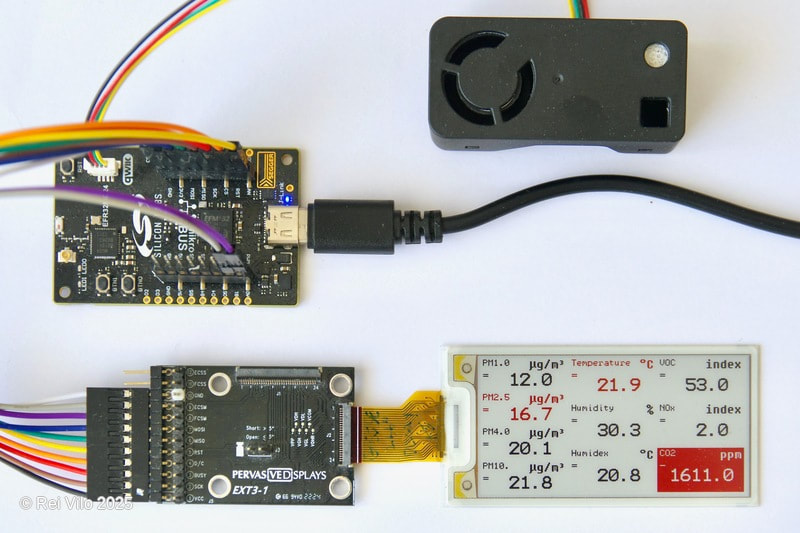Introduction
As environmental awareness grows, monitoring air quality in both urban and rural areas has become critical. As pollution levels fluctuate due to climate, industrial activity and traffic, real-time data can guide public behavior and policy. Traditional stations, while accurate, are expensive and scarce. Stand-alone embedded systems now offer a cost-effective, scalable alternative. We are attempting to use our EPD Extension Kit Gen 3 (EXT3-1) coupled with our 2.66″ BWRY Spectra 4 Eink E-Paper Display to build a reference design with such a modern solution, using Silicon Labs’ EFR32xG24 SoC paired with Sensirion’s SEN66 sensor to deliver high accuracy monitoring with low power consumption.
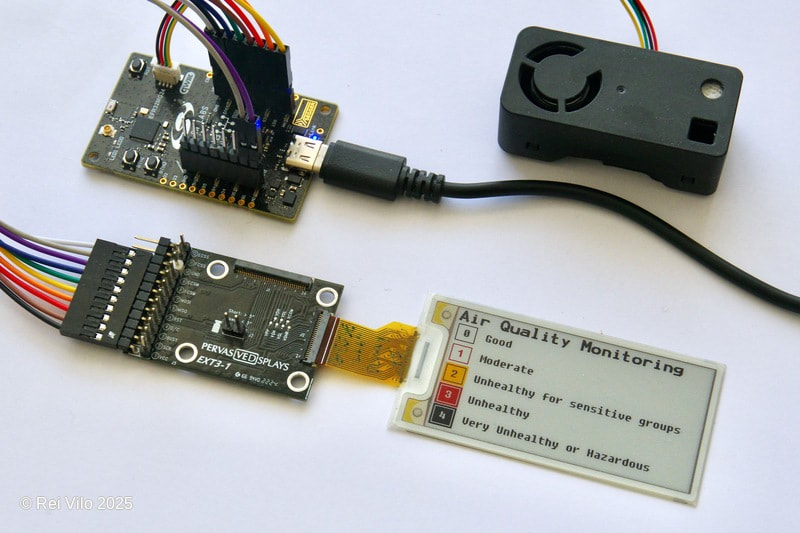
The Need for Smarter Monitoring
Air pollutants, particularly particulate matter (PM) and volatile organic compounds (VOCs), are directly linked to respiratory and cardiovascular disease. Monitoring these pollutants is no longer the sole responsibility of governments. Industry, research labs and even hobbyists are increasingly using compact, sensor-based solutions. These systems enable real-time, site-specific air quality assessment – critical for informed decisions in agriculture, smart cities and health applications.
The Core Technologies
- 2.66″ four-color E-Paper Display (EPD)
This high-resolution EPD features black, white, red and yellow colours with Eink Spectra 4 technology from Pervasive Displays Inc. providing the perfect indicators to show users air quality levels in different colours. Thanks to its ultra-low power consumption and excellent paper-like contrast ratio, we can show a lot of information on the screen such as PM, VOC, CO2, temperature, humidity and more instant results.
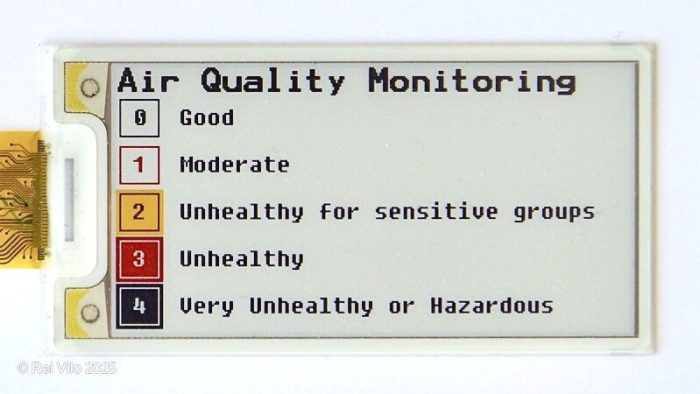
- EPD Extension Kit Gen 3 (EXT3-1)
This EXT3-1 has populated the driving circuit on board with a 10-pin header of GPIOs and EPD connector for you to easily connect to any of Pervasive Displays’ EPDs and your EVK board to start developing your concept immediately.
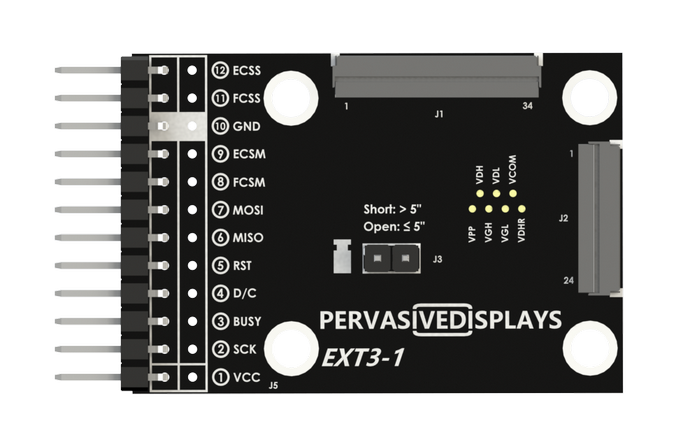
- Silicon Labs EFR32xG24 Explorer Kit
This kit is based on the EFR32MG24 SOC, a low-power Cortex M33 with multi-protocol 2.4 GHz connectivity, including Matter, BLE and Zigbee, optimized for wireless IoT applications. - Sensirion SEN66
The SEN66 is a multi-gas sensor that offers detection of VOCs, PM1.0, PM2.5, PM10, CO₂ equivalents, and ambient temperature and humidity.
Project Architecture
The SEN66 feeds real-time environmental data into the EFR32xG24, which then processes the results and transmits them through the onboard interfaces of the EXT3-1 board to update the values of 2.66″ EPD with different color levels.
The code is available at the PDI EXT3 Air Quality GitHub repository.
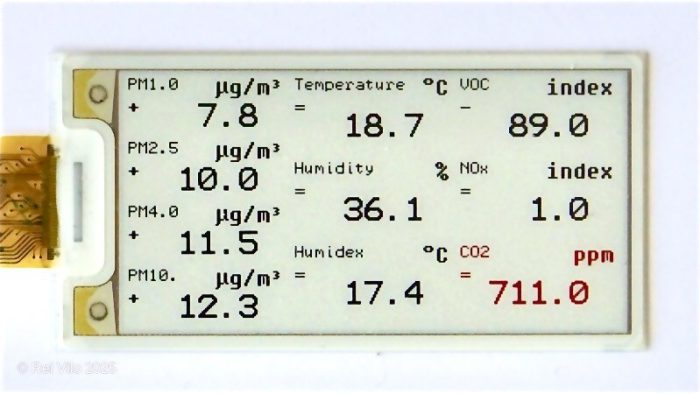

Potential Applications
- Indoor Air Quality (IAQ): Smart home integration for health-conscious environments.
- Industrial Safety: Real-time alerts in factories or warehouses for dangerous gas concentrations.
- Urban Monitoring: Deployment across neighborhoods to feed data into a centralized map.
- Agricultural Optimization: Monitoring air composition in greenhouses or storage environments.
Advantages Over Traditional Setups
- Compact and Scalable: Easier to deploy than station-based systems
- Wireless and Modular: Data can be collected from thousands of locations simultaneously
- Edge Intelligence: Embedded capabilities reduce cloud dependency and bandwidth costs
- Customizable Thresholds: Users can configure alerts or responses based on project-specific needs
Future Directions
This reference design can evolve to include additional sensors (e.g., ozone, carbon monoxide) or integrate GPS for geo-tagged data collection. Combined with cloud platforms and AI analytics, these devices could soon form the backbone of environmental decision-making frameworks.
Conclusion
By pairing the SoC with the Air Quality sensors, developers can create smart, energy-efficient air quality monitoring solutions. These devices democratize access to environmental data and empower individuals, organizations, and cities to take control of the air they breathe. We have created EPDK-Matter Development Kit to enhance smart home devices through EPDs that provide users with better information and an enhanced user experience.
In our office, we place a few EPDK-Matter kits with 2.9″ high-resolution wide-temperature EPD and coin cell battery to connect to Google Nest Hub 2 to sense the environmental conditions, fast refresh the values on screen and illuminate the onboard LED every 5 seconds to indicate instant air quality without any wiring.
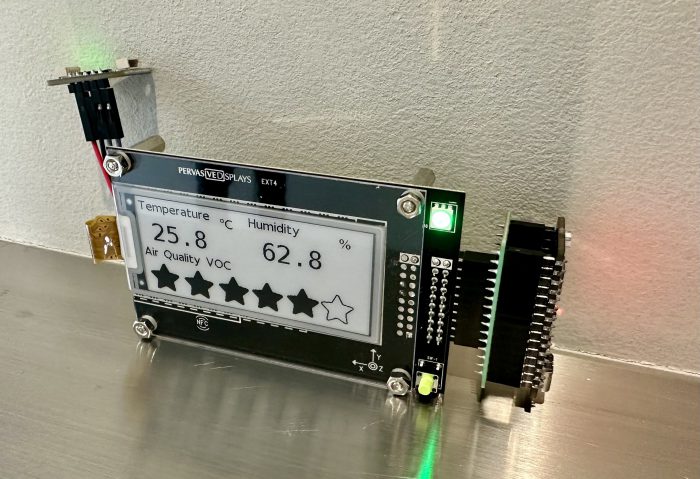
If you need any support for this reference design, feel free to contact us for more information.

